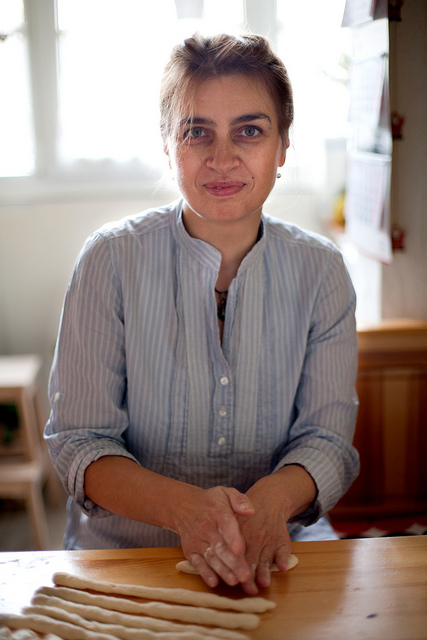The first mills were created in ancient Egypt 3000 years ago and people began to make bread at home. Fluffy bread was found in the large bakeries of the pharaohs. Most likely, this discovery was made by accident: as spontaneous fermentation of dough and then subsequently, as induced alcoholic yeast fermentation of grape juice and hops. Souring led to the appearance of different types of dough and accordingly to various kinds of bread products.
In ancient times, Greek bread was made from barley. Athenian statesman and legislator Solon said that whole wheat bread was baked only for holidays. Ritual bread in Ancient Greece was served to the gods and was called "psadista". It was made from flour, olive oil and wine. Ancient Greek writer Athenaeus described the different types of bread that were widespread among ancient Greeks. After the 5th century BC, bread could be purchased from bakeries in Athens. This was the beginning of bakeries. Bread making became a public occupation only at the height of the Roman Empire when the first public bakeries, which fed the population, appeared as well.
In medieval Europe bread was not only a staple food, but also part of the table arrangement. According to the standard table arrangement, a piece of stale bread, about 15 x 10 inches, was served as an absorbent plate. Upon completion of eating, this kind of dish could be eaten or given to the poor.
In pursuit of the mysterious sourdough

PhD. Iglika Mishkova will surely expand your notion of a curator of the Museum of Ethnography. As an ethnologist, she spends quite a lot of time outside the museum, conducting field research. She goes where things happen and where she can obtain information from the source. In her work, she faces puzzles and secrets carefully kept by the local population, whose confidence she must gain in order for them to share these secrets with the inquisitive researcher. Her path crossed that of bread making while she was exploring the Communion Bread seals - wooden seals put to ritual bread. It is known that since the time of ancient Egypt and perhaps earlier, people have associated bread with, and woven it in, their religious beliefs and rites. Firstly, cultivation of cereals directly relates to the vagaries of the weather, which cannot but lead to requests and prayers for suitable weather conditions to secure a sufficient and good harvest so that the population does not starve. Secondly, the dough is soft and can be shaped in a variety of figures, ornaments and symbols. Last but not least, the very making of bread is a mystery: the miracle of converting seeds that are useless to man, but full of nutrients, into delicious, healthy and nutritious bread that retains vitamins, minerals and good microorganisms. It takes her several visits to Greece to uncover the secret of sourdough kept by Pontic Greeks.
The first part of her research took her to Albania and Greece. She believed that she could find more information about different customs, the ways in which the Communion Bread seals were used. When starting to ask about these seals, the conversation inevitably came to bread and to ways to make different types of bread. Her research took her to Greece, to the region around Lake Prespa, including to the island of St. Achilles. Each one of her sources, the people she met, told her about a mysterious sourdough that they bought only from Pontic Greeks. With the sourdough they traditionally used before, "the bread made at the beginning of the week would becomeas hard as a bone towards the end of the week," local people said. But after the arrival of Pontic Greeks who brought with them this miraculous sourdough the secret of which they carefully kept, "the longer you keep bread, the tastier it becomes." Of course, Pontic Greeks were not talkative. They mentioned the name of a yellow plant that grew somewhere near the river, but she could not associate it with anything familiar. They never agreed to show her that plant.
Subsequently, she continued with another field research in Kali Vrisi, near Drama. She again asked about bread and obtained the same information, "Yes, when the Pontic Greeks arrived, they have brought a great sourdough that makes excellent bread." Pontic Greeks there were quite silent again, "One of our secrets, one of our secrets... ", they responded. She was asking, suggesting various options and her own guesses but again nobody was inclined to share more information. Only at their next meeting, they went to her with the words, "We have asked who you are, why you are collecting these things and we have written down the recipe for you." To her surprise, this was a recipe for hops sourdough. You remember the same hops that the Egyptians used to make the first fluffy bread.
PhD. Mishkova collected information about different types of sourdough. She tried gram sourdough that she knew from her grandmother. She tried one version with wood ashes, but did not achieve good results. According to her, maybe she did not follow the recipe or put more ash than necessary, as the mixture was too purified and could not rise. Ash sourdough is made from a special tree, she has it but cannot make wood ash sourdough. She obtains the tree in the same way - people bring it to her without telling her its type but according to her, it is deciduous.
